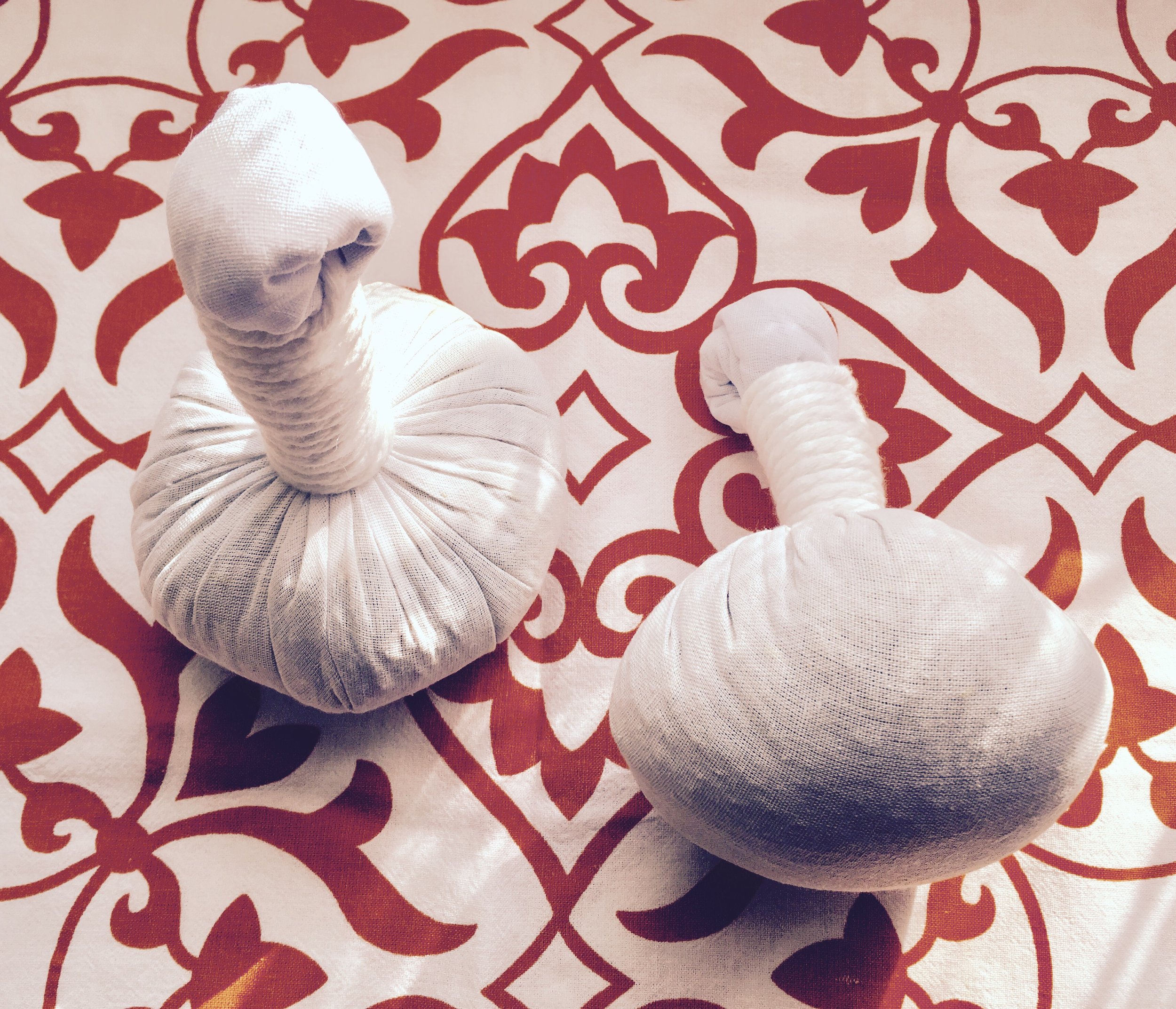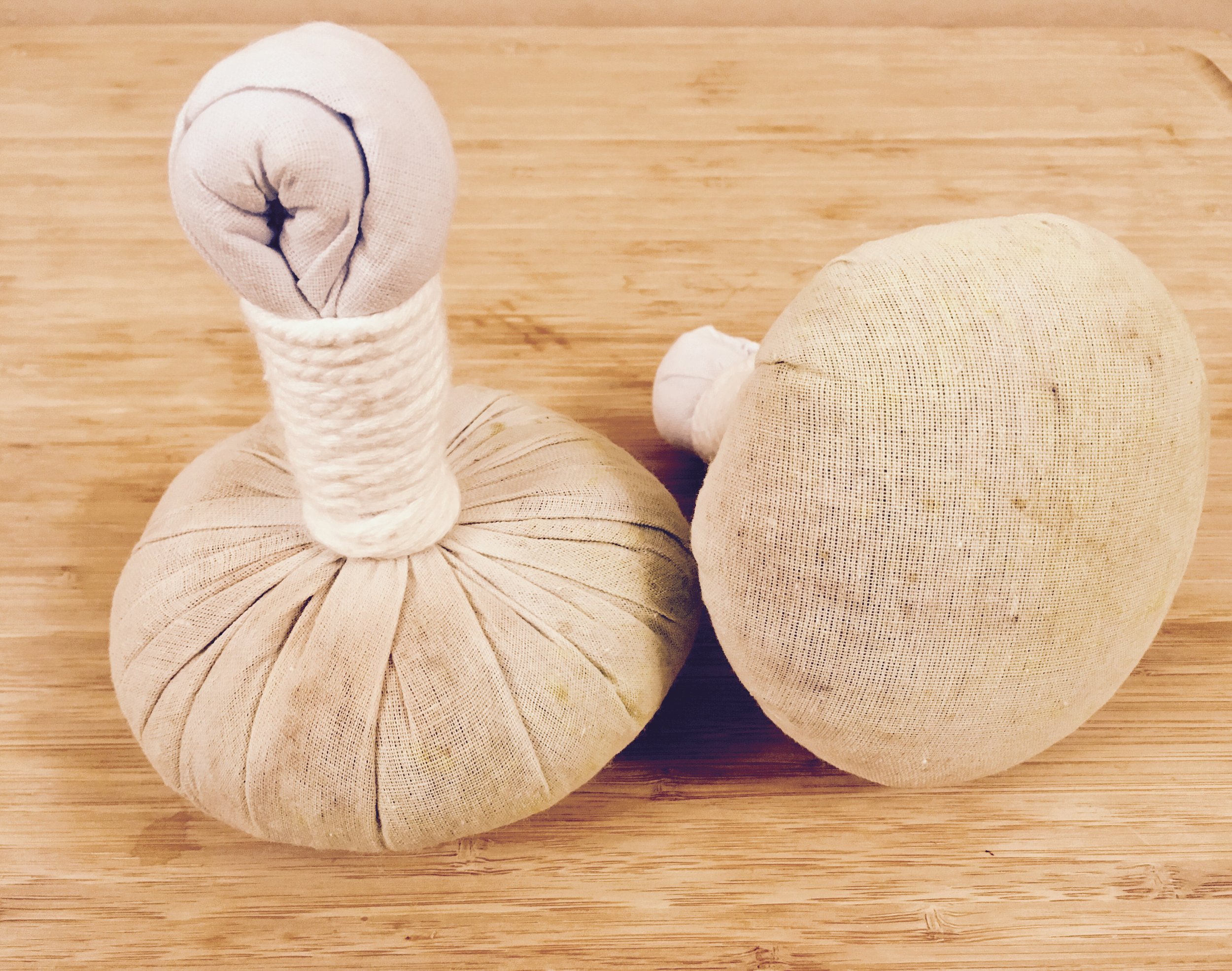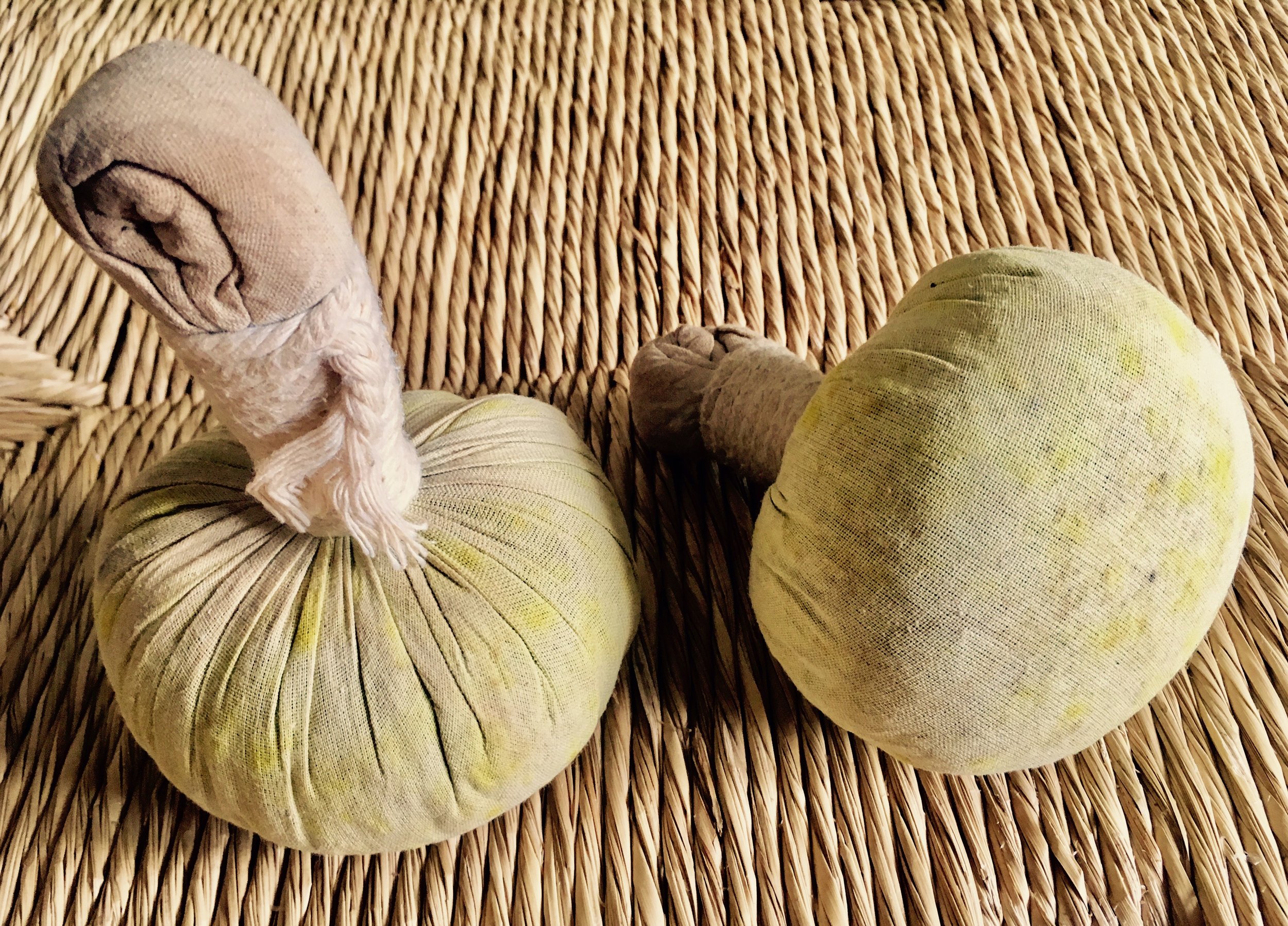Make the Most of Your Herbal Compress
One of the aspects I love most about Thai bodywork is the integration of herbal therapies into treatments. While my herbal tool kit includes balms and liniments for heating, for cooling, for injury, for calming, for stagnation, for nourishing, and the list goes on... Thai herbal compresses remain a go to tool in almost every session.The aroma of the steamed herbs is at once relaxing and focuses the mind. The warmth of the steamed herbs penetrates the layers of the body, creating a comfortable environment and allowing the body to receive work with more ease.Just as there are many balms, liniments and oils to choose from, there are many types of compresses available as well: prenatal, postpartum, joint-specific, wind-gate specific, nerve specific, and again the list goes on... in this article, discussion will focus on general musculoskeletal compresses that can be used on most people, most of the time.
Choosing a Compress
Each herbalist has their own particular blend of herbs for a general musculoskeletal compress. While you may have to just sample some different options to find your favorite, the formula should contain herbs for the first two layers of the body, at a minimum.Aside from formula, cost and associated logistics, when thinking about making the most of your compress, consider whether or not you want a hard packed compress or a soft packed compress.A softer compress will allow more room for the steam to reach the herbs and for the herbs to breathe, making them more effective in treatment. And, it could feel better on the receiver's body, as it will be more malleable.However, a hard pack will preserve the herbs longer, allowing for more uses than a soft compress. And, it will stay warm longer when in use.Depending on the quality of the herbs, whether it's hard or soft packed, how long each use is and how the compress is stored between uses, it's reasonable to expect anywhere from two to 10 uses from a single compress. This is a big range!
How to Store a Compress
Before a compress is used, and like with any herbs, it's best to store them in a sealed package at room temperature in a dark space. Stored this way, the herbs should be okay for six to 18 months, depending on many individual factors, such as climate.After a compress has been steamed, the herbs begin to degrade. Eventually, all of the antimicrobial and/or antibacterial properties of the various herbs will be gone and the herbs will need to be discarded.Between uses, we can either put the compresses into the refrigerator or freezer, or let them dry out. I usually make this call based on how soon I will be using the compresses again, the season/climate and in considering how many more uses of the compresses are available.Early on in the life of the compress, if I will be using them again the next day and drying them out is an option, I choose to leave them out on the heater or near a source of dry heat. As the herbs are degrading more or the time between uses is longer, I will choose the fridge or freezer for storage.
Final Uses
Once my compress has been taken out of my treatment rotation, I bring them home.Occasionally, when my dog was still alive, I would bring them home just a little earlier than usual and use them to soothe her aches and pains. I found waiting for the herbs to be less potent in smell and penetration was preferable to her.I know it's time to retire a set of compresses when they are getting very wet in the steamer, the aroma has diminished and the water leftover in the steamer isn't looking so much like tea anymore. Usually, the cloth wrapping is looking quite stained and worn as well.Once at home, for their final treatment, I let the compresses float around in my Epsom salt bath. By the end of my soak, the bath water is rich in color and my tissue is soft and relaxed.And, I feel very satisfied knowing I have made the absolute most out of my beloved Thai herbal compress.
